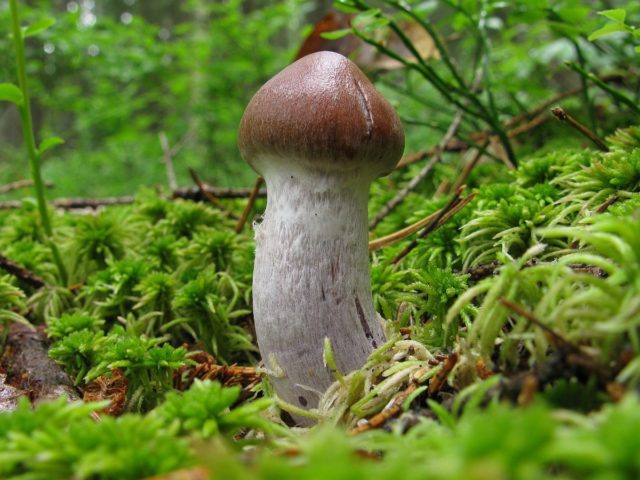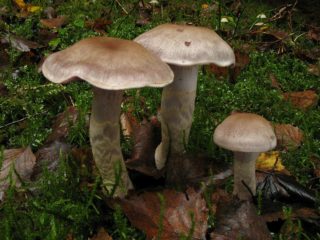Content
The slime cobweb is a conditionally edible forest inhabitant of the Cobweb family, but due to the lack of mushroom taste and smell, it is rarely used in cooking. It grows in mixed forests and begins to bear fruit from June to September. Since the species has inedible counterparts, you need to study its external characteristics and be able to distinguish it from its poisonous counterparts.
Description of the slime web
The slime cobweb can be eaten, but in order not to confuse it with poisonous specimens, familiarization with it begins with a description of the cap and stem. It is also important to view photos and videos.

In rainy weather the surface becomes covered with mucus
Description of the cap
The young, bell-shaped surface, 3-5 cm in size, straightens as it grows, maintaining a slight elevation in the center.An adult specimen has a large cap, its color varies from light coffee to olive. The edges are uneven and wavy. In dry weather the skin is glossy, but during rain it is covered with a thick slimy film.
The lower layer is formed by gray-red thin, partially adherent plates. Reproduction occurs by microscopic, oval spores that are found in ocher powder.

The spore layer is formed by frequent, adherent plates
Description of the leg
The fleshy, long leg reaches 20 cm. The spindle-shaped shape is covered with light blue skin and has a small ring from the rest of the spathe. The white or coffee pulp is fleshy, tasteless and odorless.

The leg is long, fleshy
Where and how does it grow
The mushroom grows in mixed forests on fertile soil. Fruits all summer singly or in small families.
Is the mushroom edible or not?
The slime cobweb belongs to group 4, is conditionally edible, but it is not very popular among mushroom pickers due to the lack of taste and smell. But if it gets into the basket after long-term heat treatment, it is suitable for preparing side dishes and canned dishes.
Doubles and their differences
The slime cobweb, like other representatives of the fungal kingdom, have similar counterparts. These include:
- Triumphal - edible species. It can be recognized by its bell-shaped, slimy yellow-brown cap. Grows in small groups from July to October. After prolonged boiling, it is suitable for preparing fried, pickled and salted dishes.
In cooking it is used fried
- Light ocher - a poisonous specimen that can lead to death if eaten.This species has dense, fleshy bluish-purple flesh, without taste or smell. The light brown mucous surface has a hemispherical shape. The leg is long, fleshy and dense, covered with light coffee skin.
Conclusion
The slime web is a conditionally edible forest inhabitant. The mushroom is fried, stewed, canned, but is not used in cooking without preliminary heat treatment. It grows among spruce and deciduous trees and bears fruit throughout the warm period.










